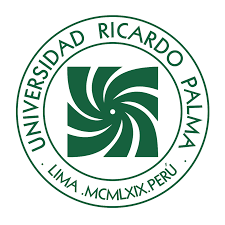Hydroponics culture of spinach through NFT technique and greenhouse to control environmental variables
DOI:
https://doi.org/10.31381/perfiles_ingenieria.v12i12.810Keywords:
NFT, greenhouse, vegetables, sensors, Arduino, hydroponics, supplies savingsAbstract
Combining the NFT technique for irrigation with nutrients utilizing the space and gravity, caring and greenhouse environmental conditions (temperature, humidity and light) conducive to hydroponics product is made. Automation system electronically makes the project as enriching thus allow optimum control with saving energy, time and hand work. The total control of a food product would be beneficial from the point of view of a productive business to support healthy and quality food.
Downloads
References
Alpízar Antillón, L. (2004). Hidroponía: cultivo sin tierra. Elementos básicos para desarrollar la técnica simple de cultivar plantas sin tierra en pequeños espacios. Costa Rica: Cartago Editorial Tecnológica.
Basterrechea, M. (febrero, 2016). «Hidroponía casera». Recuperado de http://www.hidroponiacasera.net/.
Castañeda, F., De Valverde, Ch., y García, L. (abril, 1997). Manual de cultivos hidropónicos populares: producción de verduras sin usar tierra. Guatemala: INCAP, 55 (3), pp. 1-6.
Daraviña Peña, G. y Valencia Guitierrez, R. (2014). Diseño de sistema se control de optimización ambiental para cultivo hidropónico (Tesis para optar el título de Tecnólogo en Mecatrónica) Universidad Tecnológica de Pereira.
FAO (1971). «Necesidades de Energía y Proteínas». En Alimentación y nutrición N°7.
García Torres, A. (1991). Medidor de pH de bajo costo. Educación química, 2 (2). Recuperado de file:///C:/Users/Maricarmen/Downloads/pdf87.pdf, pp. 81-85.
Guzmán Díaz, G. (2004). Hidroponía en Casa: una actividad familiar. San José, Costa Rica: Ministerio de Agricultura y ganadería-Sistema Unificado de Información Institucional.
Marulanda C., e Izquierdo J. (2003). La huerta hidropónica popular (3a ed.). Santiago de Chile: Oficina Regional de la FAO para América Latina y el Caribe.
Murray, R. et. al. (1993). Bioquímica de Harper (12a ed). Bogotá: El Manual Moderno.
Resh, H. M. (2001). Cultivos hidropónicos: nuevas técnicas de producción. Madrid: Mundi-Prensa.
Sampero Ruiz, G. (1999a). Hidroponía comercial. México D. F.: Editorial Diana.
Sampero Ruiz, G. (1999b). Hidroponía básica: el cultivo fácil y rentable de plantas sin tierra. México D. F.: Editorial Diana.
Soria Campos, J (2012). 6° Curso de hidroponía básica para principiantes. Recuperado de http://www.
asohofrucol.com.co/archivos/biblioteca/biblioteca_247_Curso%20Hidropon%C3%ADa%20 Basica.pdf.
Texier, W. (2013). Hidroponía para todos: todo sobre la horticultura en casa. Varela, F. (Trad.). París: Mama Editions.
Via, J., Elvira, V., Santamaria I. y Eickhoff, R. (2009). «Analog Antenna Combining for Maximum Capacity under OFDM Transmissions». International Conference on
ENLACES DE INTERÉS
Manual de Hidroponía. Disponible en http://www.oasisfloral.mx/pdf/manualhidroponia.pdf.
Información sobre invernaderos. Disponible en http://losinvernaderos.blogspot.pe/2010/10/sistemas-de-riego-en-cultivos.html.
N. T. F. (Nutrient film technique) y su instalación. Disponible en http://hydroenv.com.mx/catalogo/ index.php?main_page=page&id=102.
Sunrom technologies. Disponible en http://robocraft.ru/files/datasheet/DHT11.pdf.
Downloads
Published
How to Cite
Issue
Section
License
Copyright (c) 2017 Perfiles de Ingeniería

This work is licensed under a Creative Commons Attribution 4.0 International License.
In the event that the manuscript is approved for its next publication, the authors retain the copyright and assign to the journal the right of publication, edition, reproduction, distribution, exhibition and communication in the country of origin, as well as in the abroad, through print and electronic media in different databases. Therefore, it is established that after the publication of the articles, the authors may make other types of independent or additional agreements for the non-exclusive dissemination of the version of the article published in this journal (publication in books or institutional repositories), provided that it is explicitly indicated that the work has been published for the first time in this journal.
To record this procedure, the author must complete the following forms:

1.png)








